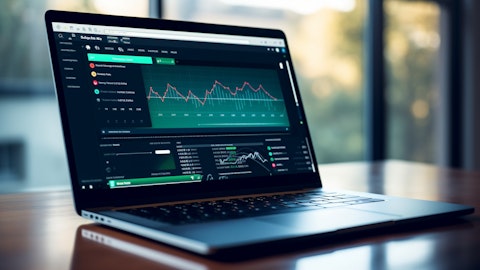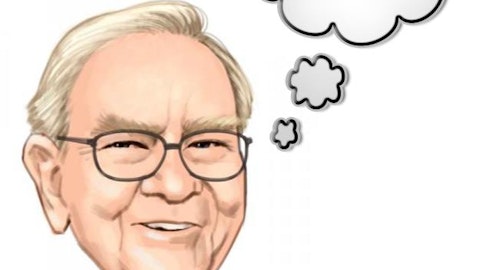Peter Kinnart: Yeah. Maybe on Germany, one of the things that we have seen is that there have been incentives in the past for energy efficient solutions and they have been kind of postponed or suspended for a while and it has been unclear for the customers, whether this would be back in place and at what level they would be back in place, and that has held back most likely some investments that otherwise would have happened. It seems now that the German authorities will reintroduce this so called BAFA incentives and that might be maybe some something that creates a little bit of extra tailwind in the near future when that happens. Gas and process overall was, I think, flattish in Europe, with the carbon capture type of application, also fuel gas boosting. And then, of course, overall, also contributing to the strength in Europe for CT was also the service that continued to grow.
Mats Rahmström: That’s true. That was good enough.
Daniela Costa: Very helpful. Thank you.
Operator: The next question comes from Klas Bergelind from Citi. Please go ahead.
Klas Bergelind: Hi, Mats and Peter. Klas at Citi. So my question is on gas and process. I mean, we all know by now that this business can be lumpy, but I’m just trying to figure out more around the order mix in the quarter and the order pipeline. I understand that the strength here quarter on quarter wasn’t only linked to LNG. So, what else drove it was the carbon capture, I guess, but other color would be great. And if you look at the pipeline, Mats, in gas and process, is there any vertical in that pipeline that is growing stronger more than others? I’ll stop there.
Mats Rahmström: No. But as you know then, gas and process, we normally say it’s around 10% of CT’s business. It’s a little bit more right now with the activity we have seen there. And I don’t think there’s any specific area or segment that is standing out. But it is, as you say, we get this quarter we had a number of orders for liquid natural gas. But some of the other applications as well that I mentioned to Daniela just before your question. So I cannot read. But the pipeline is strong. The orders on hand is strong. If you want a new product, you have to wait a significant amount of months for that and I’m sure that we even walk away from some orders because either low margins or that the lead time is too long.
So we’re also building capacity for that type of business. But I think many of these we have, I think, the most positive is that Vagner and the team, Robert, they have really taken us out away from this low margin business and we are spreading our competences among many more applications today. So I don’t expect it to fall off a cliff again when one of the applications disappear. So we have presence in many more. I don’t think we can define that there’s one that is significantly stronger. Of course, liquid natural gas gets the boost of trying to get away from some other gas from a specific region. But maybe we can give you more guidance when we meet, but that’s where I am right now.
Klas Bergelind: Perfect. Thank you. And a very quick follow up just on the battery side in China and zooming in a bit on automotive and IT. You obviously have exposure both in CT and IT, but focusing a bit on IT. Some concerns here into the quarter that orders in IT would be much weaker led by China. You’re saying that equipment orders in automotive were flat. Can we talk about what you saw in China in the quarter? You’re talking about your own offering increasing, of course, more project orders working as an offset or did you see any regions that offset the decline in China? Thank you.
Mats Rahmström: Yeah. Specifically offset is that we see more activity than in Southeast Asia. Some parts was in India, but I would say, Southeast Asia is close by. But I also like to clarify that the EV trend is very, very strong in general. We believe in that trend. We can see a lot of investment. We also see that the Chinese manufacturers are way ahead of many of their Western competitors. And although that we have seen in the Western part of the world postponed projects, we don’t think that the trend will go away. But that is clearly, of course, that the cars are good. They are developing new programs. But it’s a hesitation from the consumer at this point to step in mainly to financial reasons, I would believe. But the softer part is China and compensated by some extent to rest of Southeast Asia.
Klas Bergelind: Thank you and it’s your last quarter. So thank you Mats for all great discussions over the years.
Mats Rahmström: Okay. Thank you so much, Klas.
Operator: The next question comes from Sebastian Kuenne from RBC Capital Markets. Please go ahead.
Sebastian Kuenne: My question is regarding pricing. We saw in the profit bridge that you have a drop-through of about 32% for volume and pricing and mix, which is still very strong. But I recall that in Q4 it was nearly 50% and I assumed it’s because you have, so that the price increases were quite effective and now we see this drop-off. Can you give us some indication of where pricing is currently where you go this year and whether or not you will offset the cost inflation? Thank you.
Peter Kinnart: Thank you, Sebastian, for your question. Well, I would say, compared to where we were a year ago, where inflationary pressures were really, really high, the possibility to transmit price increases to the market were quite generally accepted, I would say, even though not easy to obtain. That, of course, is to be expected to gradually weaken a bit. But I would not say that we have lost a lot of pricing power. It — I would say, overall, you can say that the pricing is still positive across all the DAs in the first quarter. So I think the drop-through, of course, evolves over time and is not exactly the same each and every quarter. I think it’s still well above the current margin, and of course, we have said in the past as well that a drop-through of 30%, 35% is quite solid.





